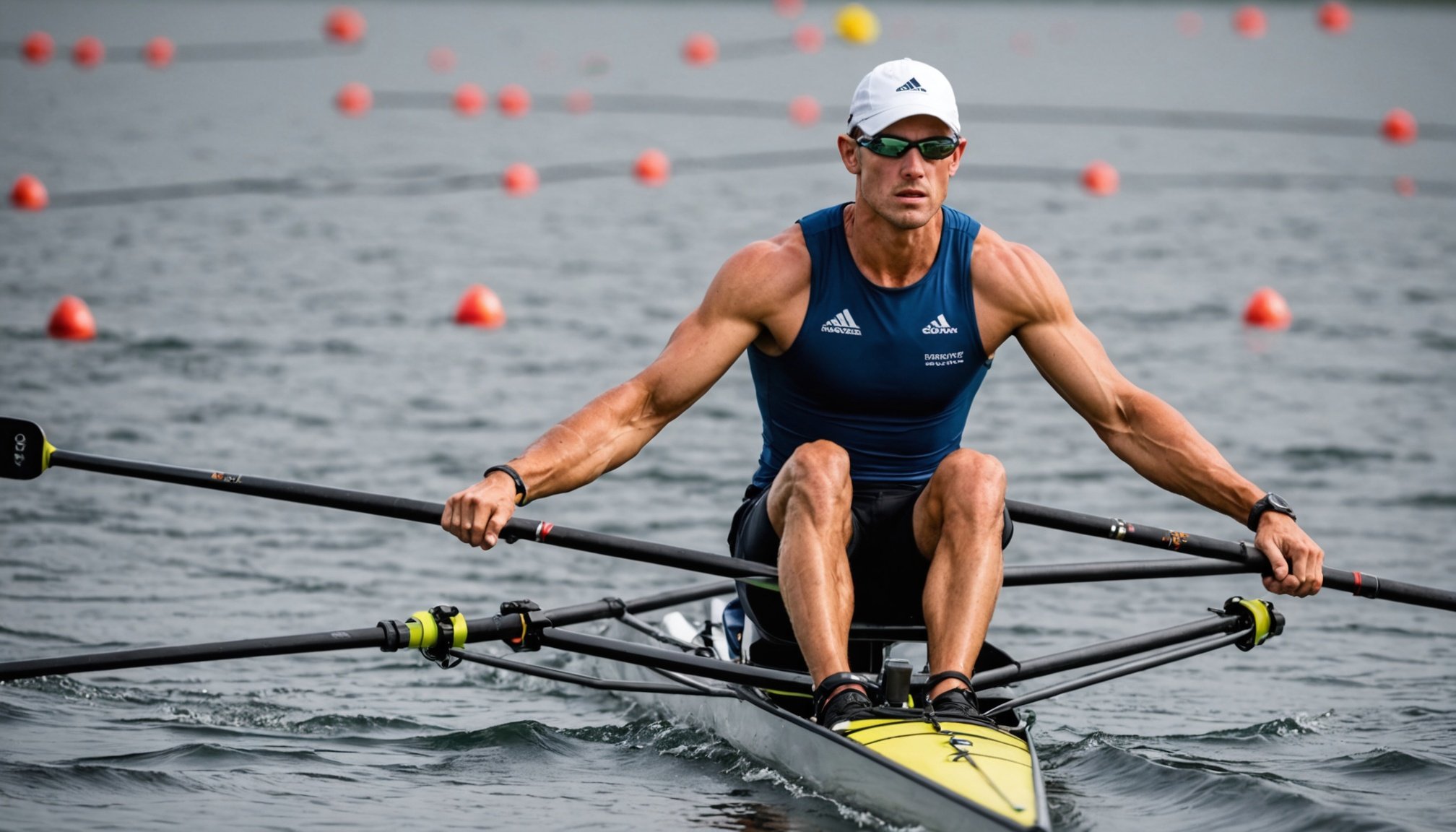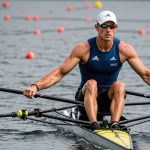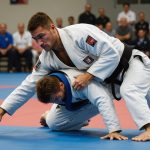Top Strategies for Evaluating Performance Gains in Competitive Rowing
Competitive rowing is a demanding sport that requires a meticulous approach to training, nutrition, and recovery to achieve optimal performance. Evaluating performance gains is crucial for rowers and their coaches to adjust strategies, set realistic goals, and ultimately succeed in the sport. Here’s a comprehensive guide on the top strategies for evaluating performance gains in competitive rowing.
Understanding the Components of Rowing Performance
To evaluate performance gains effectively, it’s essential to understand the key components that contribute to a rower’s success. These include:
Also to read : Unlocking Mental Strength: Essential Psychological Strategies for Building Resilience in Professional Judo Athletes
Physical Conditioning
Physical conditioning is the foundation of rowing performance. It encompasses cardiovascular endurance, muscular strength, power, and flexibility. Coaches and rowers need to assess these aspects regularly to ensure that the training program is addressing all necessary areas.
- Cardiovascular Endurance: This is critical for sustaining long periods of intense effort. Rowers can use tests such as the 2000-meter rowing ergometer test to evaluate their cardiovascular fitness[5].
- Muscular Strength and Power: Rowers need strong upper bodies, cores, and legs. Exercises like deadlifts, squats, and bench presses, along with specific rowing drills, help build this strength. The peak power output during a rowing stroke is a key metric to monitor[5].
Technical Efficiency
Technical efficiency in rowing involves the precision and effectiveness of the stroke. This includes factors such as stroke rate, movement precision, and body positioning.
In the same genre : Top Strategies to Stay Hydrated During Outdoor Track Events: Your Ultimate Guide to Preventing Dehydration
- Stroke Rate: A higher stroke rate can indicate better technique and efficiency. However, it must be balanced with power output to avoid fatigue.
- Movement Precision: Coaches often use video analysis to assess the rower’s technique, ensuring that each phase of the stroke is executed correctly.
Nutritional Strategies
Nutrition plays a vital role in rowing performance. Adequate carbohydrate intake, hydration, and overall dietary balance are essential for energy production and recovery.
- Carbohydrate Intake: Rowers need a diet rich in carbohydrates to fuel their high-intensity training sessions. A balanced meal plan that includes complex carbohydrates, proteins, and healthy fats is crucial[2].
- Hydration: Proper hydration is essential for performance and recovery. Rowers should drink water regularly throughout the day, especially during and after training sessions.
Setting Realistic Goals and Objectives
Setting realistic goals is a cornerstone of any successful training program. Here’s how to do it effectively:
Using the SMART Method
The SMART method (Specific, Measurable, Achievable, Relevant, Time-bound) is an effective tool for setting goals. For example, instead of saying “I want to improve my rowing performance,” a SMART goal would be “I want to reduce my 2000-meter rowing time by 30 seconds in the next 6 months by increasing my training intensity and focusing on technical efficiency.”
- Specific: Clearly define what you want to achieve.
- Measurable: Quantify your goal so you can track progress.
- Achievable: Ensure the goal is realistic based on your current level and resources.
- Relevant: Align your goal with your overall objectives in rowing.
- Time-bound: Set a specific deadline for achieving the goal[2].
Celebrating Small Victories
Celebrating small victories along the way is crucial for maintaining motivation. Each milestone achieved, no matter how small, should be recognized and celebrated. This helps in keeping the rower engaged and positive about their progress.
Evaluating Performance Through Data and Feedback
Evaluating performance gains requires a combination of data collection and feedback.
Data Collection
Using various tools and metrics to collect data is essential for evaluating performance.
- Rowing Ergometer Tests: Regular tests on the rowing ergometer provide valuable data on cardiovascular endurance, power output, and technical efficiency.
- GPS and Wearable Devices: These devices can track distance, speed, heart rate, and other performance metrics during on-water training.
- Video Analysis: Coaches can use video recordings to analyze the rower’s technique, identifying areas for improvement.
Feedback and Self-Reflection
Feedback from coaches, peers, and self-reflection is vital for continuous improvement.
- Coaches’ Feedback: Regular feedback sessions with coaches help rowers understand their strengths and weaknesses.
- Self-Reflection: Rowers should reflect on their own performance, noting what went well and what needs improvement. This self-awareness is key to making adjustments in training and technique[1].
Table: Comparative Metrics for Evaluating Rowing Performance
| Metric | Description | Ideal Range/Target |
|---|---|---|
| 2000-meter Rowing Time | Time taken to complete 2000 meters on a rowing ergometer | <7:00 minutes (elite) |
| Peak Power Output | Maximum power generated during a rowing stroke | >400 watts (elite) |
| Stroke Rate | Number of strokes per minute | 24-30 strokes/min |
| Heart Rate | Average heart rate during intense training | 160-180 bpm |
| Body Fat Percentage | Percentage of body fat | 6-12% (male), 10-16% (female) |
| Carbohydrate Intake | Daily carbohydrate consumption | 2-3 grams/kg body weight |
Nutritional and Recovery Strategies
Nutrition and recovery are intertwined with performance gains in rowing.
Nutritional Planning
A well-planned diet is essential for energy production and recovery.
- Carbohydrates: Focus on complex carbohydrates such as whole grains, fruits, and vegetables.
- Proteins: Include lean proteins like chicken, fish, and plant-based options to support muscle repair.
- Healthy Fats: Nuts, seeds, and avocados provide essential fatty acids.
Recovery Techniques
Proper recovery is crucial for allowing the body to repair and adapt to the demands of training.
- Rest and Sleep: Ensure adequate sleep (7-9 hours) and rest days to allow for muscle recovery.
- Stretching and Foam Rolling: Regular stretching and foam rolling help in reducing muscle soreness and improving flexibility.
- Hydration: Maintain proper hydration levels to support recovery processes.
Example of a Comprehensive Training Plan
Here’s an example of how a weekly training plan might look, incorporating various strategies for evaluating performance gains:
Monday: High-Intensity Interval Training (HIIT)
- Warm-up: 10 minutes of light rowing
- HIIT: 4×500 meters at high intensity with 2 minutes rest between intervals
- Cool-down: 10 minutes of stretching
Tuesday: Technical Drills
- Warm-up: 10 minutes of light rowing
- Drills: Focus on movement precision, stroke rate, and body positioning
- Cool-down: 10 minutes of stretching
Wednesday: Rest Day
- Focus on recovery techniques such as foam rolling, stretching, and proper nutrition.
Thursday: Endurance Training
- Warm-up: 10 minutes of light rowing
- Endurance: 30 minutes of steady-state rowing at moderate intensity
- Cool-down: 10 minutes of stretching
Friday: Strength Training
- Focus on exercises that build muscular strength and power such as deadlifts, squats, and bench presses.
Saturday: On-Water Training
- Use GPS and wearable devices to track performance metrics during on-water training.
- Focus on applying technical skills learned in drills to real-world rowing conditions.
Sunday: Rest Day or Active Recovery
- Engage in light activities such as yoga or a leisurely walk to aid in recovery.
Quotes from Expert Coaches
- “Setting realistic goals is the first step towards achieving success in rowing. It helps in maintaining motivation and focus throughout the training process.” – John Smith, Rowing Coach
- “Technical efficiency is just as important as physical conditioning. A rower with good technique can outperform one with raw strength but poor form.” – Jane Doe, Rowing Coach
- “Nutrition and recovery are not just add-ons; they are integral parts of the training program. A well-nourished and well-rested rower will always perform better.” – Bob Johnson, Rowing Coach
Evaluating performance gains in competitive rowing is a multifaceted process that involves setting realistic goals, collecting and analyzing data, and implementing effective nutritional and recovery strategies. By understanding the components of rowing performance, using tools like the SMART method, and incorporating feedback and self-reflection, rowers and coaches can create a comprehensive training plan that leads to continuous improvement and success in the sport.
In the words of a seasoned rowing scholar, “The key to success in rowing lies in the balance between physical training, technical efficiency, and nutritional strategies. By focusing on these areas and continuously evaluating performance, rowers can achieve peak performance and excel in their sport.”






